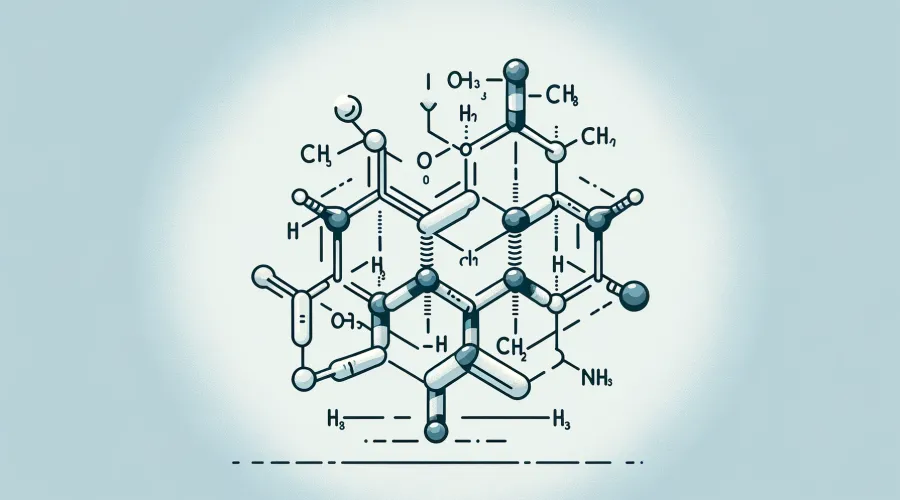
Dive into the microscopic world of biochemistry, where the seemingly simple bonds between molecules orchestrate the symphony of life. In this exploration, we focus on the peptide bond, a fundamental yet intricate connection that plays a pivotal role in the structure and function of proteins. Understanding peptide bonds is not just about comprehending a chemical link; it's about unravelling the secrets of biological mechanisms that drive our existence.
What is a Peptide Bond?
A peptide bond is a covalent bond formed between two amino acids when a carboxyl group of one amino acid reacts with the amino group of another, a water molecule is released in what is known as a condensation reaction. The bond created is a CO-NH bond, referred to as a peptide bond, and the resulting molecule is called an amide. This reaction is a fundamental process in forming proteins, with the peptide bond serving as a critical structural component that links amino acids together in a polypeptide chain. The stability and characteristics of peptide bonds are crucial to the function and shape of proteins, impacting everything from enzyme activity to hormone function in biological systems. The bond created is a CO-NH bond, referred to as a peptide bond, and the resulting molecule is called an amide.
Peptide Bond Formation
To form a peptide bond, the amino acid molecules must be oriented so the carboxylic acid group of one amino acid can react with the amine group of another.
This process of peptide bond formation can be actively illustrated by considering two lone amino acids. When these amino acids come into contact, they combine through a condensation reaction, where the carboxyl group of one amino acid reacts with the amino group of another. This interaction results in forming a dipeptide, the simplest form of a peptide, composed of just two amino acids linked by a single peptide bond. This dipeptide exemplifies larger peptides and proteins' fundamental structure and formation mechanism.
Moreover, a chain of amino acids can form new peptides. As a general guide, fewer than 50 amino acids are classified as peptides, 50-100 polypeptides, and those with over 100 amino acids as proteins.
Hydrolysis, a chemical breakdown involving water, can break peptide bonds. Although this reaction is slow, peptide bonds in peptides, polypeptides, and proteins are susceptible to breakage upon water contact. The reaction between a peptide bond and water releases about 10kJ/mol of free energy, with an absorbance wavelength of 190-230 nm.\
Enzymes within living organisms can form and break down peptide bonds. Many hormones, antibiotics, antitumor agents, and neurotransmitters are peptides, often classified as proteins due to their amino acid count.
Structure of the Peptide Bond
X-ray diffraction studies of small peptides reveal that peptide bonds are rigid and planar, a result of the resonance interaction of the amide. The amide nitrogen can delocalize its pair of electrons into the carbonyl oxygen, affecting the peptide bond's structure. The N-C bond in the peptide bond is shorter than the N-Cα bond, and the C=O bond is more extended than standard carbonyl bonds. The carbonyl oxygen and amide hydrogen typically adopt a trans configuration, which is more energetically favourable due to reduced steric interactions compared to a cis configuration.
The Polarity of the Peptide Bond
Typically, free rotation should occur around a single bond between a carbonyl carbon and amide nitrogen. However, the nitrogen's lone pair of electrons, near a carbon-oxygen bond, allows for a resonance structure with a double bond linking the carbon and nitrogen. This imparts a negative charge on the oxygen and a positive charge on the nitrogen, inhibiting rotation around the peptide bond. The structure is a hybrid of these two states, with the peptide bond exhibiting roughly 40% double-bond character, making it rigid.The resulting charges give the peptide bond a permanent dipole, with the oxygen-carrying a -0.28 charge and the nitrogen a +0.28 charge.
Summary
In conclusion, peptide bonds are chemical connections and the backbone of biological structure and function. Their formation through condensation reactions and their role in linking amino acids in polypeptide chains are crucial for protein synthesis. The rigidity, planarity, and polarity of peptide bonds, resulting from their unique resonance structure, impart stability and specific structural configurations to proteins. These bonds, vital in forming peptides, polypeptides, and proteins, are essential for various biological functions, including enzyme activity and hormone function. By understanding peptide bonds, we gain insight into the intricate dance of molecules that form the essence of life.
